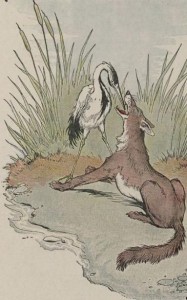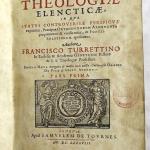 Called upon to present a gift to a small boy, I was asked to pick a book. I have no expertise in the area of children’s literature, so was left to select the things that I myself liked when young. That becomes difficult when you grew up in an era in which children were less cosseted and the books were more realistic.
Called upon to present a gift to a small boy, I was asked to pick a book. I have no expertise in the area of children’s literature, so was left to select the things that I myself liked when young. That becomes difficult when you grew up in an era in which children were less cosseted and the books were more realistic.
Old Yeller came to mind, but the dog dies in the end and nobody can have that kind of thing anymore. The Yearling came to mind too, but the deer gets shot at the climax, so that likewise had to be set aside. Not because I wouldn’t have bought these books if I could find them, but I couldn’t even find them in the bookstore and didn’t have time to order.
Another particular favorite of mine was Where the Red Fern Grows, by Wilson Rawls. It’s about two hunting dogs, Old Dan and Little Ann, and the boy who raised them. There’s a lovely Indian myth about the rarity of a red fern, but it too touches upon the last things, and the book ends like Ole Yeller. It made a big impression on me though—I still think of it often—and it’s a shame that with all the wizards and dragons and junk going around, the lessons of such old tales can’t be learned now in favor of all these empowerment narratives that they foist upon the young.
Every girl in the books has to be a kick-ass princess and every boy has to identify with an anthropomorphized truck or airplane or penguin, an underdog who has to “out-believe” the more talented trucks, airplane, or penguins who’re always telling him that he “can’t” do whatever they can.
I’ve never found that by just “believing” more in my mediocre abilities, my mediocre abilities will somehow become less mediocre. It’s a lie to be told otherwise. You have to face some facts—that you have talents, that they are of a certain level, and you must accept that level and maximize them the best you can. But they won’t magically change just because you have more “heart.”
You’d learn that from Where the Red Fern Grows, if you could find it, and if you were allowed to read it.
Anyhow, I decided to give this little boy something that was still in print, but that didn’t have all the edges sanded off either. So I picked Aesop’s Fables.
Before there were Germans, who gave us tales of the Black Forest, or the French, who gave us tales of Perrault, there were Greeks. And for one particular Greek, whether he was real or himself only a fable, it was the animal world that transmitted lessons to the small. To Aesop, we likely owe the convention of using four-legged displacement in almost all of our children’s stories.
But I don’t think it was for the reason that we’d now say—i.e., as a means to soften a world too severe for those of tender years. Instead, as G.K. Chesterton said, the use of animals was natural for the big-brained Greeks, “because animals cannot help but be themselves.” They are true to their natures, and therefore the best teachers.
It’s probably a function of each person’s personality, the fables that appeal to us. I relate three here, as I’ve found them to have helped me in past experiences:
The Wolf and The Crane: The Wolf had a fish bone caught in his throat. He promised the Crane a reward if she, with her long neck, would stick her head down his throat and extract the bone. The Crane complied. When the Wolf, free of the bone, walked away, the Crane asked for her reward. The Wolf turned to say, “You can tell your friends that you put your head down the throat of a wolf and lived to tell about it.”
The Moral: When serving the wicked, expect no reward, and consider yourself lucky to have escaped without any bad consequences.
The Dog and The Manger: The Dog, jealous of the Cows who had their food provided for them every day in a convenient place, while he had to hunt and forage for his meals, decided to jump into the manger and run away the cows. Though he could not eat the grain, he would not let the Cows have the grain either.
The Moral: Beware those who cannot manage a task themselves, but will not let others, who can in fact manage it, do so.
The Wolf and the Lamb: The Wolf, hungry early in the morning, accused the Lamb of trespassing on his land and said he would eat the Lamb for the offense. The Lamb said he could not have trespassed, as he was only a day old and had never been beyond the field. So the Wolf accused him of stealing his dinner, whereupon the Lamb objected that all he ate was his mother’s milk. A series of accusations and denials transpired, and then the Wolf said, “Well, I’m tired of all this and it’s time for my breakfast.” Whereupon he made short work of the Lamb.
The Moral: A tyrant has no ears and needs no excuse to do what he will.
Two wolves and a dog—not unlike the other books I liked, the ones I couldn’t find. But they’re the ones that appeal to me most. There are plenty of gentler fables, and I suppose most parents would skip these. But I think that’s a shame. Because there’s no doubt of the truth in these harder stories, as it’s a hard life, for the big and the small, and that’s true whether or not we believe it with all our hearts.
A.G. Harmon teaches Shakespeare, Law and Literature, Jurisprudence, and Writing at The Catholic University of America in Washington, D.C. His novel, A House All Stilled,won the 2001 Peter Taylor Prize for the Novel.















